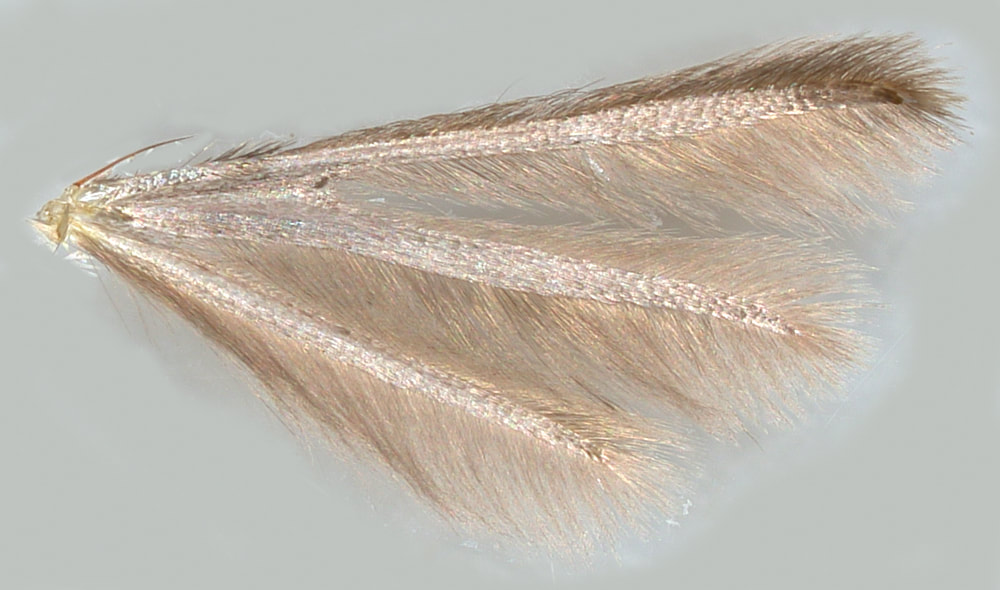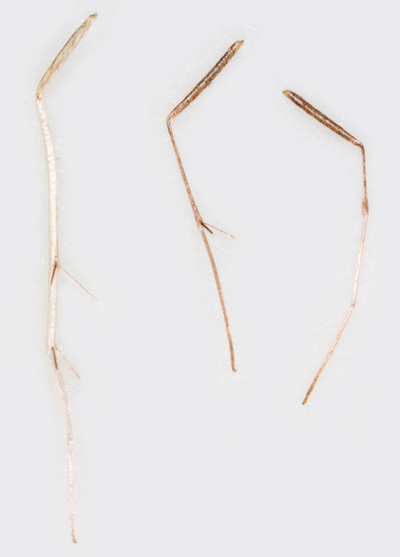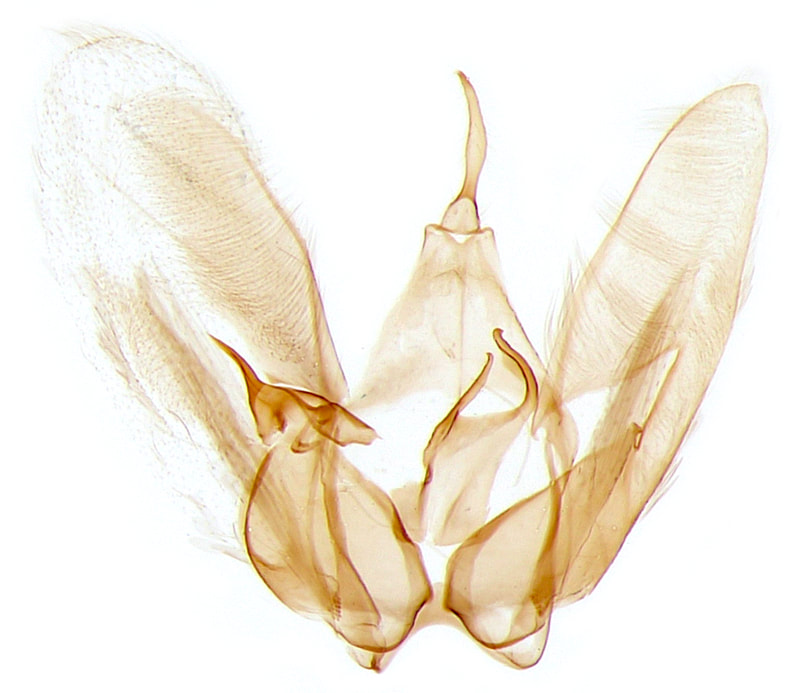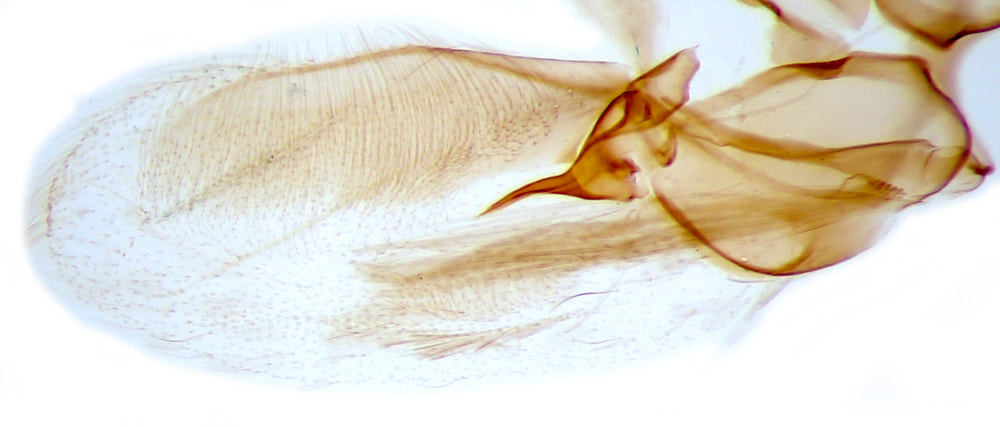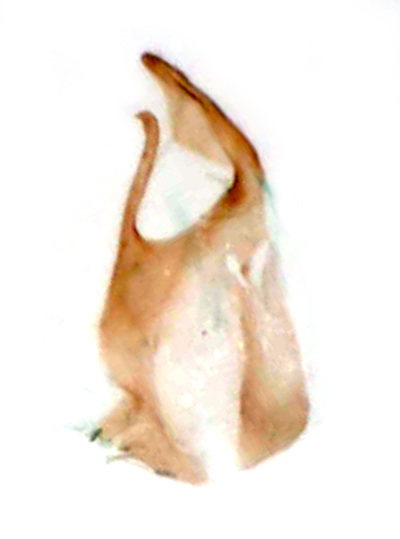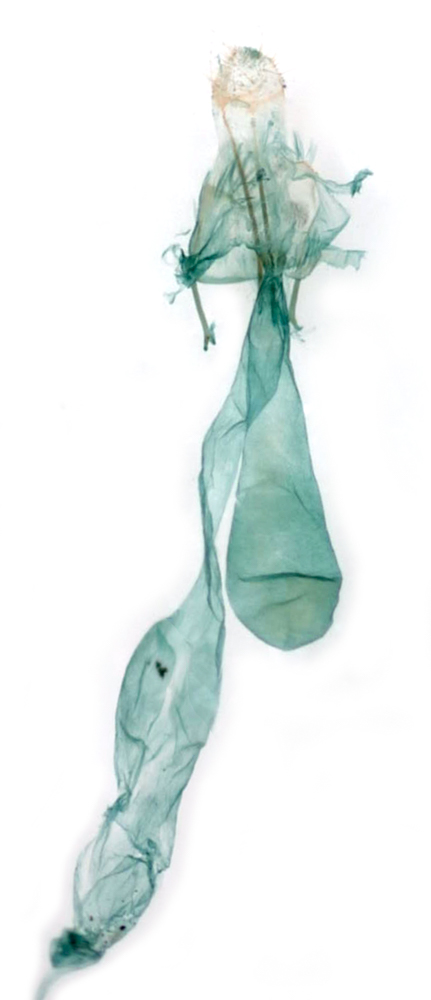45.039 Hellinsia carphodactyla (Citron Plume)
ws:14-23mm; Jun-Sep; ploughman's spikenard (Inula conyzae); NS-B - chalky S coasts of England
ID: Hellinsia species are similar in appearance to the other genera in group 2b
Oidaematophorus (ws26-92mm) is larger than all Hellinsia species and has prominent scale-brushes on the midleg. Hellinsia species may show weakly-developed scale-brushes on the midleg and the formal distinction from Oidaematophorus is based on the female genitalia, in which the antrum is strongly sclerotised in Oidaematophorus and only weakly so in Hellinsia.
Emmelina has unequal proximal hindleg spurs, the medial spur being twice as long as the lateral spur.
Although Adaina is generally recognised by its small size (ws13-17mm), there is overlap with H.carphodactyla (ws14-23mm) and H.osteodactylus (ws16-23mm). The generic distinction is based on forewing venation (I am not sure I have properly understood the detail in the text of Gielis and the differences are not illustrated). These two genera may be separated by the extent of the apical cleft: 1/3 of forewing length in Hellinsia, 1/2 of forewing length in Adaina.
Genital dissection is required to separate the Hellinsia species from each other.
Male Genitalia:
H.carphodactlya: L saccular spine acute, broad-based, <1/3 length of valva; R valve with tiny saccular spine
H.chrysocomae: L saccular spine slender, 1/2 length of valve; R sacculus projecting beyond valve with pointed apex
H.osteodactylus: L saccular spine broad-based, become slender towards apex, 1/3 length of valve; R sacculus with bilobed club-like apex
H.tephradactyla: L saccular spine slender, curved, 1/3 length of valve; R valve with small saccular spine
H.lienigianus: L saccular spine broad-based, with a bent spine 1/3 length of valve, the spine arising from dorsal margin of the base (my description of Gielis's illustration); R valve with minute saccular spine.
All the Hellinsia species are illustrated in Gielis with a small cornutus towards the apex of the aedeagus (though it is only mentioned in the text for H.carphodactyla).
Female Genitalia:
H.carphodactyla is distinguished by having short anterior apohyses with a bifid apex.
Oidaematophorus (ws26-92mm) is larger than all Hellinsia species and has prominent scale-brushes on the midleg. Hellinsia species may show weakly-developed scale-brushes on the midleg and the formal distinction from Oidaematophorus is based on the female genitalia, in which the antrum is strongly sclerotised in Oidaematophorus and only weakly so in Hellinsia.
Emmelina has unequal proximal hindleg spurs, the medial spur being twice as long as the lateral spur.
Although Adaina is generally recognised by its small size (ws13-17mm), there is overlap with H.carphodactyla (ws14-23mm) and H.osteodactylus (ws16-23mm). The generic distinction is based on forewing venation (I am not sure I have properly understood the detail in the text of Gielis and the differences are not illustrated). These two genera may be separated by the extent of the apical cleft: 1/3 of forewing length in Hellinsia, 1/2 of forewing length in Adaina.
Genital dissection is required to separate the Hellinsia species from each other.
Male Genitalia:
H.carphodactlya: L saccular spine acute, broad-based, <1/3 length of valva; R valve with tiny saccular spine
H.chrysocomae: L saccular spine slender, 1/2 length of valve; R sacculus projecting beyond valve with pointed apex
H.osteodactylus: L saccular spine broad-based, become slender towards apex, 1/3 length of valve; R sacculus with bilobed club-like apex
H.tephradactyla: L saccular spine slender, curved, 1/3 length of valve; R valve with small saccular spine
H.lienigianus: L saccular spine broad-based, with a bent spine 1/3 length of valve, the spine arising from dorsal margin of the base (my description of Gielis's illustration); R valve with minute saccular spine.
All the Hellinsia species are illustrated in Gielis with a small cornutus towards the apex of the aedeagus (though it is only mentioned in the text for H.carphodactyla).
Female Genitalia:
H.carphodactyla is distinguished by having short anterior apohyses with a bifid apex.
§1 Portland, Dorset; 20/06/2015; male; fw 9.3mm
§2 Portland, Dorset; 20/06/2015; female; fw 8.9mm
§3 Portland, Dorset; 11/09/2019; male; fw 7.9mm
§4 Portland, Dorset; 29/08/2023; male; fw 7.5mm
All images © Chris Lewis
§2 Portland, Dorset; 20/06/2015; female; fw 8.9mm
§3 Portland, Dorset; 11/09/2019; male; fw 7.9mm
§4 Portland, Dorset; 29/08/2023; male; fw 7.5mm
All images © Chris Lewis
Page published 19/02/2016 (§1-2) | §3 added 17/12/2019 | §4 added 28/12/2023








